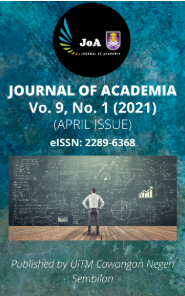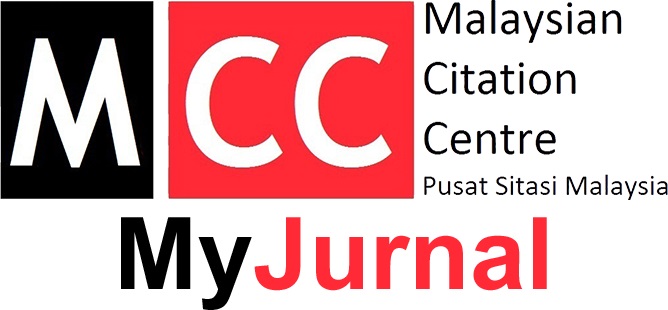EFFECTS OF DIFFERENT FERTILIZERS FORMULAS ON THE GROWTH AND DEVELOPMENT OF LEAF MUSTARD, Brassica juncea
Keywords:
leaf mustard, fertilizers, growth, leaf area index, morphometric measurementAbstract
Fertilizers are the most important and complex nutrients for crop plants in particular for grain yield and quality. The composition of the fertilizer as well as the essential elements that influence the growth of the crop need to be clearly identified. Due to that, this study was carried out to investigate the effect of different fertilizer formulation on the leaf mustard (Brassica juncea) growth. High nitrogen, phosphorus and potassium fertilizers were used to investigate their effects on the morphometric size of the leaves, plant height and the leaf area index of the leaf mustard. Results showed that the application of different formulation of fertilizer improves the growth of leaf mustard compared to control. Leaf mustard with the high phosphorus treatment recorded an increase in plant height and the leaf area index (LAI). Lamina length (LL) range is shown between phosphorus and control (1.11 cm), while the range of lamina width (LW), left width (WL) and right width (WR) are between potassium and control about 0.57 cm, 0.28 cm and 0.28 cm, respectively. Overall, there is a significant difference between the leaf mustard leaves in different high element fertilizers compared with all of the variable, F(15,1024) = 29.26, p<0.05. However, the highest mean (in cm) in height was obtained in high phosphorus (16.64) followed by high potassium (16.50), control (16.41) and high nitrogen (16.35) fertilizers with a mean range of 0.29 cm (F(3,176) = 0.47; p>0.05, no significant difference). The highest mean in LAI was obtained when treated with a high phosphorus fertilizer (0.47 m2). The mean difference of LAI of high phosphorus compared to high potassium, high nitrogen and control is 0.02 m2, 0.08 m2 and 0.12 m2. There is no significant differences between the LAI in different high element fertilizers with F(3,176) = 0.15; p>0.05. Further study should be conducted to determine the effects of different fertilizers on the growth of other vegetables and fruit quality.
References
Assuero, S. G., Mollier, A., & Pellerin, S. (2004). The decrease in growth of phosphorus-deficient maize leaves is related to a lower cell production. Plant, Cell and Environment, 27(7), 887–895. https://doi.org/10.1111/j.1365-3040.2004.01194.x
Bischoff, K. L. (2016). Glucosinolates. In Nutraceuticals: Efficacy, Safety and Toxicity. Academic Press: pp. 551-554. https://doi.org/10.1016/B978-0-12-802147-7.00040-1
De Villiers, C. J. (2007). The effect of phosphorus on the growth, plant mineral content and essential oil composition of Buchu (Agathosma betulina), Graduate Theses, Stellenbosch University.
Ellis, R. H. (1992). Seed and seedling vigour in relation to crop growth and yield. Plant Growth Regulation, 11(3), 249–255
Firoz, Z. A. (2009). Impact of nitrogen and phosphorus on the growth and yield of okra [Abelmoschus esculentus (L.) Moench] in hill slope condition. Bangladesh Journal of Agricultural Research, 34(4), 713-722. DOI:10.3329/BJAR.V34I4.5846
Gutiérrez-Boem, F. H., & Thomas, G. W. (2001). Leaf area development in soybean as affected by phosphorus nutrition and water deficit. Journal of plant nutrition, 24(11), 1711-1729. https://doi.org/10.1081/PLN-100107308
Hawrylak-Nowak, B., Hasanuzzaman, M., & Matraszek-Gawron, R. (2018). Mechanisms of selenium-induced enhancement of abiotic stress tolerance in plants. In Plant Nutrients and Abiotic Stress Tolerance. Singapore: Springer: pp. 269-295). DOI: 10.1007/978-981-10-9044-8_12
Heggie, L., & Halliday, K. J. (2004). The highs and lows of plant life: temperature and light interactions in development. The International Journal of Developmental Biology, 49(5–6), 675–687. doi: 10.1387/ijdb.041926lh.
Khan, A., Munsif, F., Akhtar, K., Afridi, M. Z., Ahmad, Z., Fahad, S., & Din, M. (2014). Response of fodder maize to various levels of nitrogen and phosphorus. American Journal of Plant Sciences, 05(15), 2323–2329. DOI: 10.4236/ajps.2014.515246
Kumar, V., Thakur, A. K., Barothia;, N. D., & Chatterjee, S. S. (2011). Therapeutic potentials of Brassica juncea: an overview. International Journal of Genuine Traditional Medicine, 1(1), 1-16. DOI: 10.5667/tang.2011.0005
Lin, C. Y., & Yeh, D. M. (2008). Potassium nutrition affects leaf growth, anatomy, and macroelements of Guzmania. HortScience, 43(1), 146–148. https://doi.org/10.21273/HORTSCI.43.1.146
Maereka, E. K., Madakadze, R. M., Mashingaidze, A. B., Kageler, S., & Nyakanda, C. (2007). Effect of nitrogen fertilization and timing of harvesting on leaf nitrate content and taste in mustard rape (Brassica juncea L. czern). Journal of food agriculture and environment, 5(3/4), pp. 285-290.
Minitab.com (2019). Pairwise comparisons for One-Way ANOVA. https://support.minitab.com/en-us/minitab/18/help-and-how-to/modeling-statistics/anova/how-to/one-way-anova/interpret-the-results/all statistics-and-graphs/pairwise-comparisons/ [4 Mac 2021].
Oke, M., Ahn, T., Schofield, A., & Paliyath, G. (2005). Effects of phosphorus fertilizer supplementation on processing quality and functional food ingredients in tomato. Journal of agricultural and food chemistry, 53(5), 1531-1538. https://doi.org/10.1021/jf0402476
Pervez, M. A., Ayub, C. M., Saleem, B. A., Virk, N. A and Mahmood, N. (2004). Effect of nitrogen levels and spacing on growth and yield of radish (Raphanus sativus L.). International Journal Agriculture Biology, 6(3).
Prodhan, A. Z. M. S., Islam, M. S., & Islam, M. M. (2018). Effect of soil and environment on winter vegetables production. MOJ Food Process Technology, 6(4), 384-389.
Radford, P. J. (1967). Growth analysis formulae-their use and abuse. Crop Science, 7(3), 171-174. https://doi.org/10.2135/cropsci1967.0011183X000700030001x
Rakow G. (2004). Species origin and economic importance of Brassica. In: Pua EC., Douglas C.J. (eds) Brassica. Biotechnology in Agriculture and Forestry, vol 54. Springer, Berlin, Heidelberg. https://doi.org/10.1007/978-3-662-06164-0_1
Rashid, M. M., Moniruzzaman, M., Masud, M. M., Biswas, P. K., & Hossain, M. A. (2010). Growth parameters of different mustard (Brassica campestris L) varieties as effected by different levels of fertilizers. Bulletin of the Institute of Tropical Agriculture, Kyushu University, 33(1), pp. 73–81.
Rodriguez, D., Zubillaga, M. M., Ploschuk, E. L., Keltjens, W. G., Goudriaan, J., & Lavado, R. S., (1998). Leaf area expansion and assimilate production in sunflower (Helianthus annuus L.) growing under low phosphorus conditions. Plant Soil, 202, pp. 133–147. https://doi.org/10.1023/A:1004348702697
Sattarian, A., Akbarian, M. R., Zarafshar, M., Bruschi, P., & Fayyaz, P. (2011). Phenotypic variation and leaf fluctuating asymmetry in natural populations of Parrotia persica (hamamelidaceae), an endemic species from the hyrcanian forest (Iran). Acta Botanica Mexicana, 97(1), pp. 65–81.
Shabala, S. (2003). Regulation of potassium transport in leaves: From molecular to tissue level. Annals of Botany, 92(5), 627-634. doi: 10.1093/aob/mcg191
Shah, Z., & Khalil, S. K. (2016). Phosphorus and zinc interaction influence leaf area index in fine vs. coarse rice (Oryza sativa L.) genotypes in Northwest Pakistan. Journal of plant stress physiology, 2, 1-8. doi: 10.19071/jpsp.2016.v2.3025
Toosi, A. F. (2010). Production ecology of Brassica Juncea (L.) czern. var. ensabi, Doctoral dissertation, University of Malaya.
Truong, K. (2017). The effects of nitrogen and potassium on the growth of Brassica rapa. Best Integrated Writing, 4, 88–99.
Wang, Z., & Li, S. (2004). Effects of nitrogen and phosphorus fertilization on plant growth and nitrate accumulation in vegetables. Journal of plant nutrition, 27(3), 539-556. https://doi.org/10.1081/PLN-120028877
Downloads
Published
Issue
Section
License
Copyright (c) 2021 Journal of Academia

This work is licensed under a Creative Commons Attribution-NonCommercial-NoDerivatives 4.0 International License.












